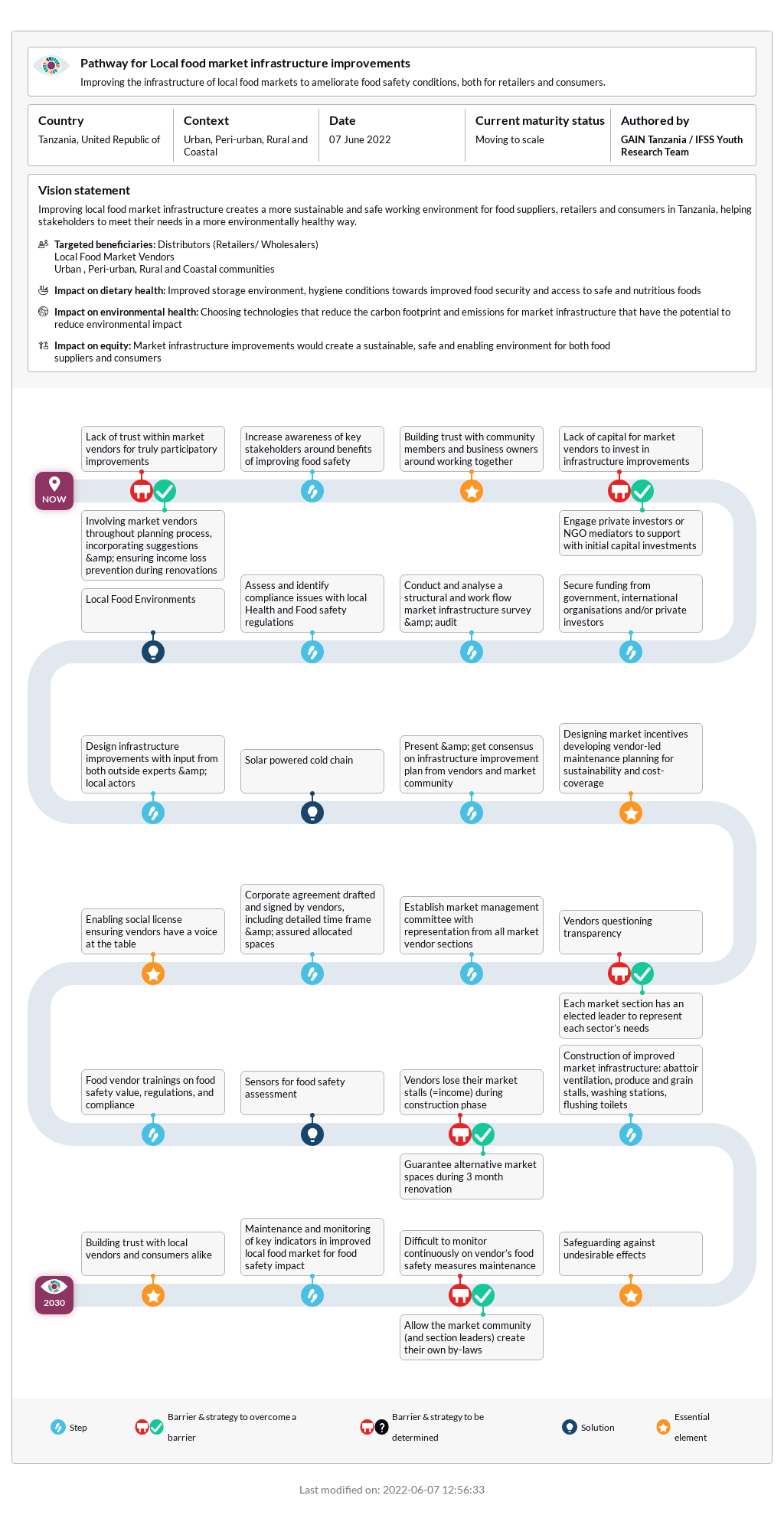Lack of capital and resource access for initial improvements is common, especially in low- and middle-income countries (LMICs). In many cases, retailers in LMICs would face a barrier with initial capital to launch or continue these improvements or may heavily rely on government, non-government, or investor’s support. Possible solutions to the problem of lack of initial capital/resources could be to create feed-in-tariffs or short-term subsidies, and/or engage private funding. Furthermore, in many dense urban environments, local sewage and potable water infrastructure is inadequate or needs updating in general. Alignment between multiple stakeholders, such as governmental organisations and market authorities, is needed to ensure the build-up, maintenance, and execution of an infrastructure improvement project. An infrastructure committee composed of various actors is recommended to ensure proper development and functioning.



